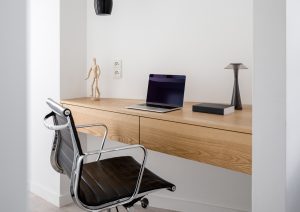I’ve worked remotely with the team here at Ideas2Live4 for close to 10 years. COVID didn’t change our working habits one bit. But few have the experience of our team to fall back on.
Our team has become used to the isolation that can be a blessing and a curse. We’ve also become used to the flexibility that WFH allows while also being mindful of the need to be productive.
I’ve learned many lessons and tried many ‘productivity’ tools over the years. Some are real winners and others, outright losers that should have never seen the light of day – all glitter and promise but no grunt.
We don’t use Zoom. Or Skype. Or email. Or Microsoft Teams. We use a little known gem called SamePage. The only thing missing in SamePage is the ability to record video and/or take screenshots. So I’ll add Screenspresso to my list of WFH ‘must-haves’.
But SamePage does have both one-on-one and one-to-many video meeting capabilties. Seriously… neither function get an outing except on rare occasions when we need to share a whiteboard.
Instead, we use keyboard chat for both work and (the occassional) ‘coffee room’ banter.
We also use the built-in voice call functionality when needed. After all, voice gives the spontaneity of video without having to worry about what you’re wearing or if you’re having a ‘bad hair day’.
All of which leads me to the following article I read this morning. It hammered home the reality that most of us are new(ish) to this WFH opportunity.
And it highlighted the challenges that need to be addressed by larger organizations where regular meetings are the norm…
Remember when we used to pop into co-workers’ offices for a quick chat or to try out an idea? When a brainstorming session could be done spontaneously? Now we need to plan a meeting to make a plan about a meeting. It’s endless. Who the heck wants to have all these meetings?
Video conferencing platforms have been the biggest winners in the age of COVID-19. Look at the numbers:

Video conferencing, or “Zooming”, as it is now commonly called, has been a lifesaver for businesses during the pandemic; allowing millions of companies to remain in operation.
However, since April 2020, there have been many reports of fatigue or even exhaustion from users of this technology. When meetings look less like an office or a boardroom and more like the opening credits of The Brady Bunch, it’s a problem.
Virtira commissioned a study about Zoom exhaustion in early 2021. We surveyed over 1700 workers, managers, and executives, across all ages and demographics, to find out why this was happening, and what could be done about it. Here are the key findings:
.png?width=737&name=WebcamSurveyBlog_Page3(1).png)
Many people will be going back to the office, but not everyone. Andrew Hewitt, Senior Analyst at market research firm Forrester, reports that 60% of companies will offer a hybrid work model post-pandemic, allowing employees a mix of home and office work. 10% of companies will be staying fully home-based while just 30% of companies will be returning to a fully staffed office space.
Prior to COVID-19, most long-term remote employees rarely enabled their webcams during calls unless deemed necessary for a presentation or a sales meeting. Once the pandemic hit, though, it became common practice to keep the cameras on, all the time. That is when the reports of exhaustion began.
Stanford University’s Virtual Human Interaction Lab (VHIL) has studied this phenomenon and identified four main causes of Zoom fatigue:

No wonder we’re feeling tired! As one of our survey subjects said:
“Please let me go back to the office!”
Many people will be going back to the office, but not everyone. Andrew Hewitt, Senior Analyst at Forrester, reports that 60% of companies will, post-pandemic, offer a hybrid work model, allowing employees a mix of home and office work. 10% of companies will be staying fully home-based while just 30% of companies will be returning to a fully staffed office space.
Prevention of Zoom Fatigue
Ask yourselves if the meeting needs video at all. This idea that everybody needs to be on camera, all the time, is the biggest factor in “Zoom Fatigue”.
For larger groups, audio-only meetings usually are just as effective, without the draining effects of the webcam. If you MUST be on video during a call, try these tips to minimize the impact:

And, for one-on-one meetings, pick up the phone and have an old-fashioned conversation. Still works great!
You can download the complete survey, click here.
What about you? Have you adjusted to the new normal or are you also struggling with Zoom fatigue? If you’re part of a smaller team – say less than 25 members – I strongly recommend you consider using the tools we’ve adopted – SamePage and Screenspresso. They’ll boost your productivity without killing the budget. More importantly, they’ll allow you to maintain strong team communication for both work and social needs.






